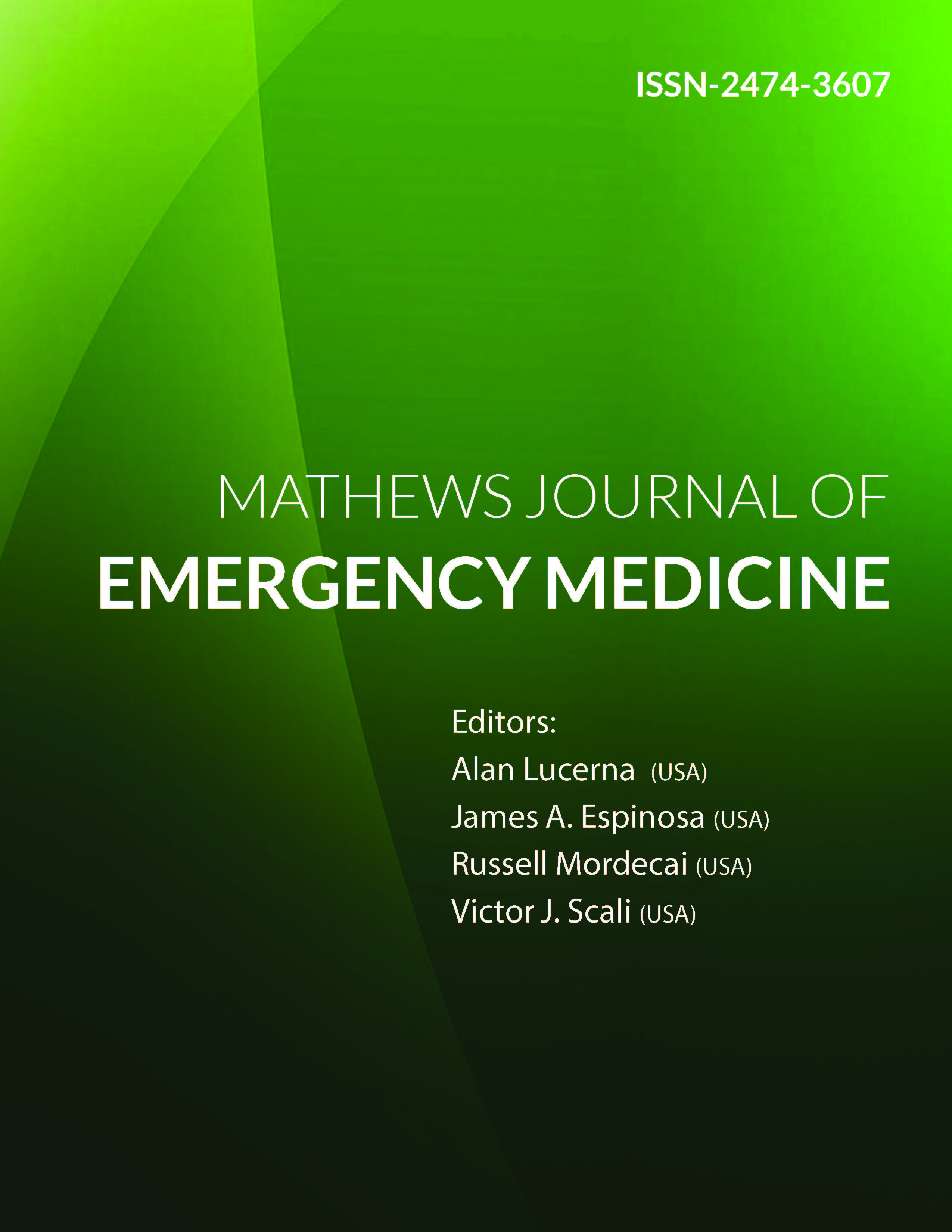
Information Links
Previous Issues Volume 7, Issue 1 - 2022
Effect of a Statewide Opioid Monitoring Program on a Community Emergency Department Opioid Prescribing Patterns
Nicole Caltabiano1, Ashley Keifer2, James Espinosa3, Alan Lucerna4, Nicholas Tomasello3, Russell Mordecai3, Henry Schuitema3, Victor Scali3
1Department of Emergency Medicine, Jefferson University, USA
2Department of Emergency Medicine, Emergency Medicine Residency Program, Rutgers Robert Wood Johnson, USA
3Department of Emergency Medicine, Rowan University, USA
4Program Director, Emergency Medicine, Rowan University, USA
Received Date: June 04, 2022
Published Date: July 08, 2022
*Corresponding Author: James Espinosa, Department of Emergency Medicine, Rowan University SOM/Jefferson - Stratford, NJ, USA, 18 East Laurel Road, Stratford, NJ 08084, Tel: 8563045101 E-mail: [email protected]
Citation: Caltabiano N, Keifer A, Espinosa J, Lucerna A, Tomasello N, Mordecai R, Schuitema H, Scali V. (2022). Effect of a Statewide Opioid Monitoring Program on a Community Emergency Department Opioid Prescribing Patterns. Mathews J Emergency Med. 7(1):43.
Copyright: Espinosa J, et al. © (2022).
ABSTRACT
Purpose of the Study: The purpose of this study was to determine if emergency physician’s opioid prescribing habits in three emergency departments of a three hospital community healthcare system changed following the revision of a state Prescription Monitoring Program (NJPMP). Materials and Methods: Design: A retrospective time series analysis Methods: A random sample of 50 days was be chosen from the year period prior to revised NJPMP) and a random sample of 50 days was chosen from the following two years. Data source: Retrospective data from an emergency department information system. Setting: Three campuses of a community emergency department system, with yearly visits to the ED in excess of 140,000. Inclusion Criteria: Retrospective, patients >18 years of age who present to the ED with pain and are prescribed opioid medication. Exclusion Criteria: Patients < 18 years of age, pregnant patients Data abstracted from EDIS was coded on entry into study and will thus had no unique identifiers. Variables: Percent opioid scripts written per given day (number of prescriptions/total adult patient volume) pre and post statewide prescription monitoring system. Average number of individual opioid pills written per prescription pre and post statewide prescription monitoring system. Average number of days’ supply of opioid prescription for each day ) pre and post statewide prescription monitoring system. Results: Opiate prescriptions written decreased from a mean of 35.14 (StDev 7.43) in the pre-intervention period to a mean of 21.70 (StDev 7.99) in the post intervention system. This difference was highly significant. ( p=0.001). The average number of pills prescribed decreased from a mean of 18.097 (StDev 2.245) in the pre-intervention period to a mean of 15.06 (StDev 3.101 in the post intervention period. This difference was highly significant (p< 0.001). The average number of day’s supply decreased from a mean of 4.512 (StDev 0.736) in the pre-intervention period to a mean of 3.845 (StDev 0.758 in the post intervention period. This difference was highly significant (p < 0.001). Discussion: There was a statistically significant decrease in all three measures when the pre-prescription monitoring program period and the post-prescription monitoring period were compared. This difference is evidence of a strong temporal relationship to the NJ-RX program, but does not prove causality. Other factors may have contributed. However, the temporal relationship is very statistically powerful and was certainly in the intended direction of effect of the reduction in opiate prescriptions. Conclusions: There was a statistically significant decrease in all three measures when the pre-prescription monitoring program period and the post-prescription monitoring period suggests that the monitoring system was likely causal.
Keywords: opiate prescribing patterns, emergency department opiate prescribing patterns